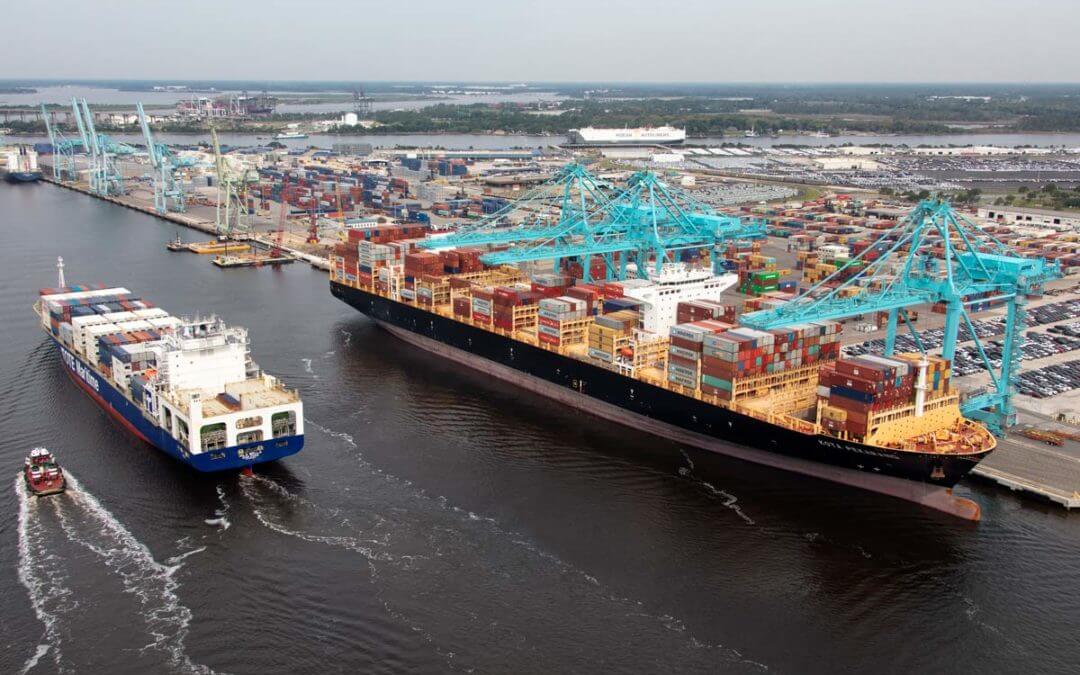Jacksonville Port Authority Prepares For Future Of Transportation, Logistics (Courtesy of Business Facilities Magazine) — As “America’s Logistics Center,” the Jacksonville region sits atop Florida, the nation’s fastest growing state, giving way to 98 million consumers within a day’s drive, amplified by a diversified transportation infrastructure of rail, air, highway and maritime.
At the center of it is Jacksonville Port Authority (JAXPORT), which has experienced record-setting growth while advancing several key strategic initiatives to further entrench the port as a vital logistics and transportation center for the country and beyond.
It is a key economic driver for Northeast Florida generating 138,000 jobs and $31.1 billion in annual impact. In Fiscal Year 2022, 1.3 million containers and more than 553,000 vehicles moved through JAXPORT, maintaining its position as Florida’s largest container port and one of the nation’s top vehicle-handling ports.
The port’s future is just as bright with the completion of the harbor dredging project last year. The project deepened the shipping channel through Blount Island Terminal to 47 feet providing a key infrastructure investment to handle post-Panamax ships. The depth gives the opportunity to simultaneously accommodate two post-Panamax ships allowing for more tonnage and fewer instances of congestion which have plagued other global ports in recent years.
It’s already paying off dividends. In May 2023, JAXPORT set a port record with the arrival of the largest container ship to call on Jacksonville, ONE STORK, which has a carrying capacity of 14,000 TEUs. The vessel called on the SSA Jacksonville Container Terminal at Blount Island during its visit and is a part of an alliance of nine vessels that will provide weekly service between the port and Asia.
JAXPORT, with investment from public and private entities, is also focused on further infrastructure development. The port is in the process of raising utility lines over the St. Johns River to 205 feet which will make the harbor even more accessible to larger ships by 2026. Additionally, they are developing state-of-the-art processing buildings, new on-site rail connections and truck loading areas, among other benefits to shippers and tenants.
Another benefit to companies working with the port is its administrative authority over Foreign Trade Zone (FTZ) No. 64 which is structured to alleviate the pain points of international shippers such as providing cost savings, reducing risks and increasing efficiencies. At more than 5,000 square miles and more than 130 million square feet of distribution center and warehousing space, FTZ No. 64 is the largest in the state, encompassing 10 Northeast Florida counties, all within proximity to JAXPORT.
JAXPORT is taking advantage of emerging trends, most notably the increased need for rail access given shortages of trucking and building out its breakbulk capacity. JAXPORT offers shippers seamless transportation via 100 trucking firms and 40 daily trains via Class I railroads CSX and Norfolk Southern and regional rail line Florida East Coast Railway.
As Jacksonville is at the crossroads of the nation’s rail and highway network along the Eastern seaboard, JAXPORT continues to lead and innovate in logistics and transportation and help businesses thrive to and through the Jacksonville region.

